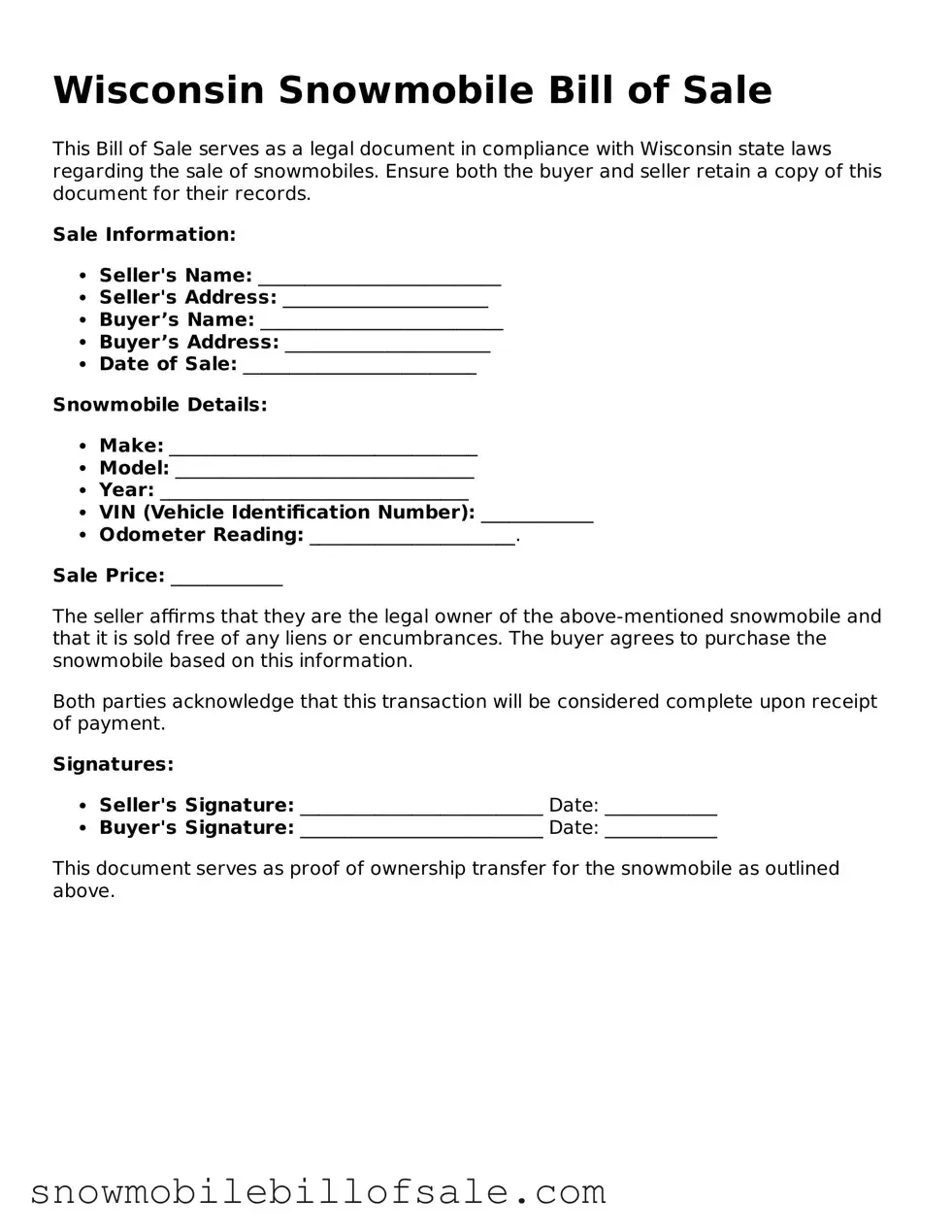The Wisconsin Motorcycle Bill of Sale serves a similar purpose to the Snowmobile Bill of Sale. Both documents provide proof of ownership transfer for vehicles that are not typically registered as standard automobiles. Each form includes essential details such as the buyer's and seller's information, vehicle identification number (VIN), and purchase price. These elements help protect both parties and ensure a clear record of the transaction.
The Wisconsin Boat Bill of Sale is another document that shares similarities with the Snowmobile Bill of Sale. Like the snowmobile form, it documents the sale of a recreational vehicle. The Boat Bill of Sale also requires the identification of both the buyer and seller, along with specifics about the boat, including its registration number and hull identification number (HIN). This ensures that the transfer of ownership is legally recognized and protects both parties involved.
The Wisconsin ATV Bill of Sale is comparable as it serves the same purpose for all-terrain vehicles. This document, like the Snowmobile Bill of Sale, outlines the details of the transaction, including buyer and seller information, vehicle identification number, and the agreed-upon sale price. This ensures that both parties have a clear understanding of the transaction and can refer back to the document if any disputes arise.
The Wisconsin Vehicle Bill of Sale is also similar in function. It is used for the sale of motor vehicles, including cars and trucks. This document captures the necessary details, such as the VIN, buyer and seller information, and the sale price. It serves as a legal record of the transaction and is crucial for the registration process of the vehicle in the new owner's name.
The Wisconsin Trailer Bill of Sale is akin to the Snowmobile Bill of Sale, as it records the sale of a trailer. Both documents require the identification of the buyer and seller, along with specifics about the trailer, such as its VIN and sale price. This ensures that ownership is officially transferred and helps prevent any future disputes regarding ownership.
The Wisconsin Mobile Home Bill of Sale is another document that parallels the Snowmobile Bill of Sale. This form is used when selling a mobile home and includes details such as the buyer's and seller's names, the mobile home's identification number, and the sale price. It provides a clear record of the transaction, ensuring that both parties are protected in the transfer of ownership.
The Wisconsin Farm Equipment Bill of Sale shares similarities with the Snowmobile Bill of Sale as well. This document is used for the sale of agricultural machinery and includes essential details like buyer and seller information, equipment description, and sale price. It serves as a legal record of the transaction, helping to safeguard the interests of both parties involved.
The Wisconsin Firearm Bill of Sale is another relevant document. It is used to record the sale of firearms and includes details about the buyer, seller, and the firearm being sold. Just like the Snowmobile Bill of Sale, it provides a written record of the transaction, ensuring that the transfer of ownership is documented and legally recognized.
Finally, the Wisconsin Personal Property Bill of Sale is similar in that it covers the sale of various personal items. This document captures the necessary details of the transaction, including buyer and seller information, a description of the item, and the sale price. It provides a clear record of the transfer, protecting both parties and ensuring a smooth transaction.
